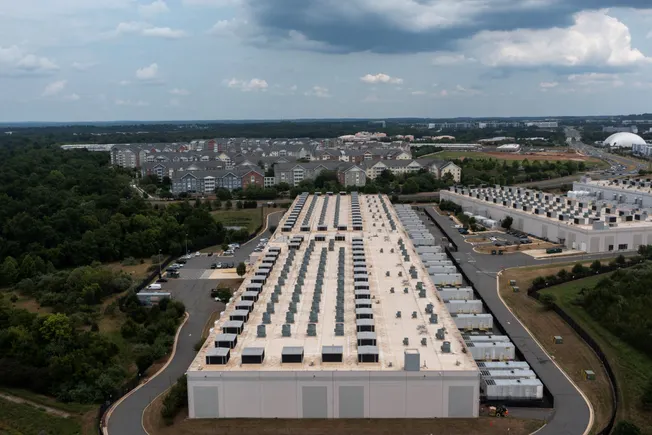
Dive Brief:
- The Ohio Public Utilities Commission unanimously approved a settlement agreement Wednesday between AEP Ohio and stakeholders setting new terms and conditions for connecting data centers to the grid.
- The Ohio Consumers Council, which represents ratepayers, and commission staff were parties to the agreement, along with Ohio Partners for Affordable Energy and others.
- The Data Center Coalition, an industry group representing Google, Amazon, Microsoft and others, has opposed the agreement since it was proposed in October, saying it would dampen investment by artificially inflating data centers’ costs and impose cumbersome regulation on behind-the-meter energy generation at the facilities.
Dive Insight:
The commission ordered AEP Ohio to file updated tariffs and lift a moratorium on connecting new data centers as soon as possible.
The order adopted the agreement as it was proposed in October, with a modification requiring the data center customer or the customer’s financial sponsor to put up collateral, as long as the sponsor is a co-signer on the contract.
The order sets minimum monthly bills for new data centers larger than 25 MW based on a percentage of their highest previous monthly billing demand over the past 11 months or their contract capacity. That means they will have to pay for at least 85% of the energy they expect to need each month, even if they use less, to cover the cost of infrastructure needed to bring electricity to the facilities. It also requires data centers to show they are financially viable and to pay an exit fee if their project is canceled or they can’t meet obligations.
The requirements would be in place for up to 12 years, including a 4-year ramp-up period.
The vote comes as regulators, lawmakers and utilities across the country are struggling to manage new interconnection requests from large loads, led by data centers, amid concerns about increased costs for ratepayers and intense debate over projections of huge demand growth in the coming years.
Speaking after the vote, Commissioner Dennis Deters said the order supports development for a “unique class of ratepayers” while protecting other classes from costs associated with increased load on the system, transmission buildout and potential stranded costs.
But he emphasized that it only applies to AEP Ohio’s territory. AEP Ohio is a subsidiary of American Electric Power that serves about 1.5 million residential and commercial customers in the state.
“We should continue to be vigilant and deliberate as it relates to data center development and recognize that our entire region, within our regional transmission organization, is experiencing this same growth throughout its footprint, at scale,” Deters said. “Ohio is not on an island, and rapid growth from data centers and other high load customers throughout PJM, coupled with increased retirement of dispatchable generation, has created an unprecedented challenge for state regulators, federal regulators and our legislators.”
The Data Center Coalition issued a statement expressing disappointment in the decision.
“The decision is a stark departure from solutions enacted in other key data center markets and, more consequentially, is a deviation from the long-established, sound ratemaking principles that have carried both Ohio and the nation through periods of electricity demand growth and flat demand,” said Lucas Fykes, director of energy policy at the coalition.
“The data center industry is committed to paying its full cost of service,” he added.





















